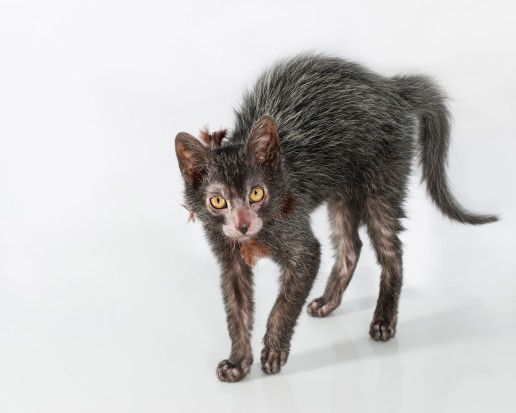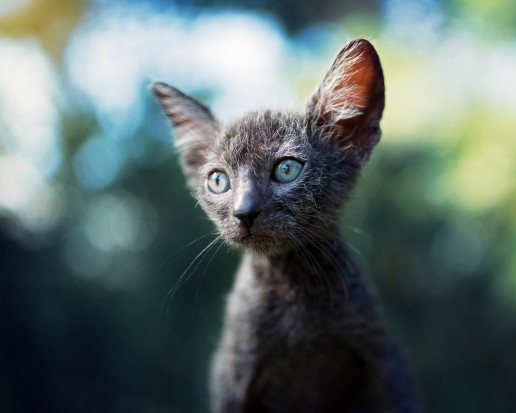


If you have never heard of the Lykoi cat, you are in good company, as this very new breed is not widely known outside of its origins within Memphis, Tennessee. However, as a new breed of cat and one that is very unusual at that, the breed is garnering a lot of attention worldwide, as well as generating a reasonable amount of controversy.
The Lykoi cat is also known as the "werewolf cat" or “wolf cat,” and its appearance is supposed to resemble a werewolf, which is achieved due to the cat having sparse fur in a two-tone pattern, which is dark in colour. The scarcity of their fur is due to a genetic mutation that is now being selectively bred for in order to establish the breed lines, and this is what makes the breed so very unique.
In this article, we will provide a basic introduction to the Lykoi cat, and some information on this very new breed. Read on to learn more.
The Lykoi cat occurred as a naturally occurring mutation of the domestic shorthair cat, when two different lines of domestic shorthairs in the Tennessee area produced litters of partially hairless kittens, and so created the foundations of the breed. The first cats of the type now known as the Lykoi didn’t appear until post 2010, making the Lykoi possibly the most recent new breed internationally.
The core appearance trait of the breed is that they have less than 50% of the amount of fur usually seen on a cat, and in some cases are almost entirely without fur. They are genetically distinct from the various Sphynx cat breeds that are entirely hairless, and their colouration and fur type is said to resemble the opossum.
The coat that is present is always black or very dark, and the breed standard dictates that the cat should have a lithe body and wedge shaped head. They are friendly, personable and very affectionate with their families. The face is usually almost entirely hairless, and the combination of the dark hair and grey skin gives the remaining fur a dark grey to black appearance. Younger cats of the breed tend to shed a lot of hair, but when they are older, tend to grow a more consistent coat.
When Lykoi cats first began to appear with some regularity in the Tennessee area, the University of Tennessee examined cats of the breed for any problems or abnormalities of the skin that might be the cause of the lack of fur. However, they did not identify any skin problems or health issues with the skin that arose due to or caused by the partially hairless appearance of the breed.
Studies identified that a significant amount of the hair follicles on the coat of the Lykoi cat lacked the required components to properly produce hair, and also in some cases, lacked the required components to maintain a coat. Due to this, the Lykoi appearance is partially hairless, and the parts of the coat that are present tend to moult fairly heavily.
The Lykoi coat and follicular abnormality was deemed to be caused by a naturally occurring genetic mutation, which is now being selectively bred for to produce further cats of the type.
Lykoi cat breeders and promoters state that the genetic anomaly that causes the partial coat fur does not come accompanied by any health problems, and it is true that none have been identified to date. However, as a very young breed that has only been properly established for a couple of years, not enough data is held to be able to state with certainty that the mutation that causes the coat pattern will not also come accompanied by other potential problems.
As the founder cats of the type grow to old age and more and more cats of the type are bred, more reliable figures and studies may be undertaken to definitively identify any potential health problems.
Selectively breeding to promote a mutation is considered to be controversial in itself, and so many cat organisations and enthusiasts are reserving judgement until the breed becomes more firmly established.
As the Lykoi’s origins are with non-pedigree domestic shorthair cats, other than the genetic anomaly that causes the coat issues, the gene pool for the Lykoi’s origins is considered to be diverse and healthy, and not associated with any other specifically inherited health problems.
Currently, the Lykoi cat is recognised by TICA (The International Cat Association) for registration only, meaning that the breed has gone through the first stage of gaining formal recognition, but is not currently fully recognised and as such, cannot be shown.
The GCCF (Governing Council of the Cat Fancy) within the UK does not currently recognise the breed.
Copyright © 2005-2016 Pet Information All Rights Reserved
Contact us: www162date@outlook.com